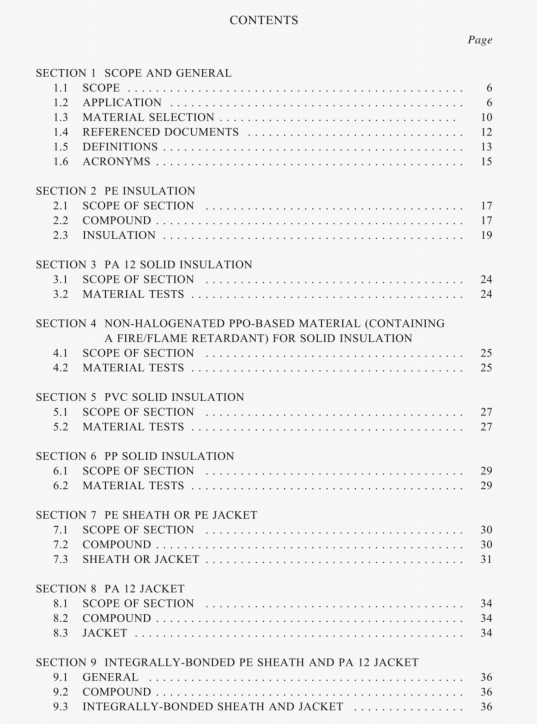AS 1049:2000 pdf – Telecommunications cables- Insulation, sheath and jacket.
2.3.3 Colour rnastcrbatch The insulation is coloured by using colour masterbatches during the extrusion process.
Solid or cellular insulation may be coloured with the same colour masterbatches. Generally the cellular insulation is a paler colour than the solid insulation but both are with the specification limits.
NOTE: (lenerally, PE insulation for cables jointed outdoors is required to last a number of decades within a variety of covered outdoor environments, most of which are thermally severe. This demands that the polyethylene base is well stabilised, that reprocessed worked or recycled material is not used and the only addition to the polyethylene, the colour masterbatch, does not inadvertently cause degradation throughout the life of the insulation. In particular the grade of polyethylene carrier, type of colorant, type of coating on the colorant and type of amount of opacifier are all important and should be considered when choosing colour masterbatches.
A suitable specification for the colour masterbatch for the ‘more severe condition’, in addition to meeting the requirements of this Standard when incorporated into insulation, is as follows;
The colourants used in the concentrates should be finely disperse, contain no heavy metals, and have excellent heat stability up to 250°C. The opacifier should be a high level rutile (approaching 100%) titanium dioxide with low catalytic reactivity for high durability in plastics. The carrier should be a Type I, Category 3 and contain a suitable amount of a suitable long term antioxidant. No dispersants, waxes, or low molecular weight polyolefins should be used. The final concentrates should be easy flowing granules capable of being easily dispersed in all polyethylenes and being used in both solid and cellular insulation. The concentrates should be suitable for high quality film production and should not cause agglomerations or imperfections on the conductor insulation such as to cause faults during the spark test.
2.3.4 Material tests Where tested in accordance with the appropriate appendices. PE insulation taken from completed cables shall comply with the requirements of Table 2.2.
For filled cable, the combination of filling compound and PE determine the compliance with this Standard and they do not pass or fail independently of one another. Some PE plastics may pass with one filling compound and not with another. Experience has shown that the worst case scenario is with the small conductor size, jelly filled and cellular PE ins u 1 at ion.
In the transition period, until 31 December 2002, cables in the ‘more severe conditions’, ‘cables jointed outdoors’ shall either—
(i) meet the pedestal and OIT tests (thermal ageing test 40) or meet the antioxidant content (test 16).
AS 1049:2000 pdf – Telecommunications cables- Insulation, sheath and jacket
